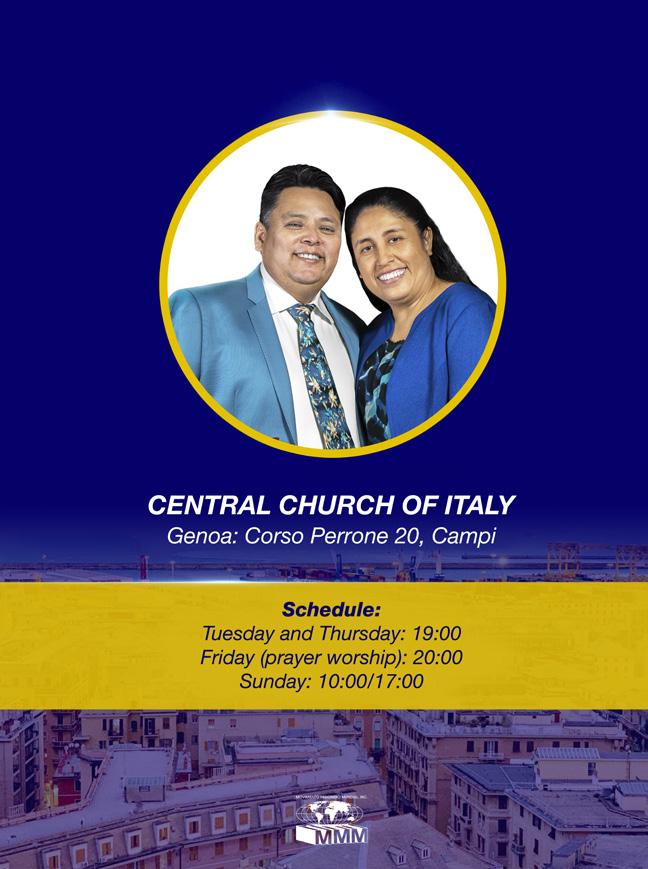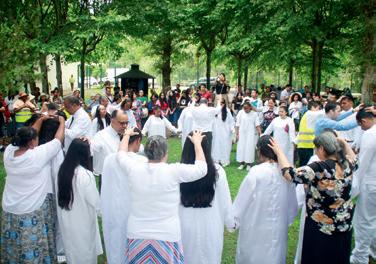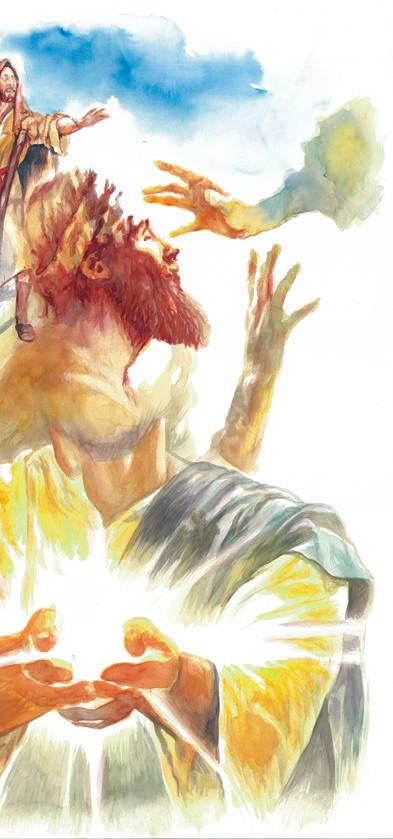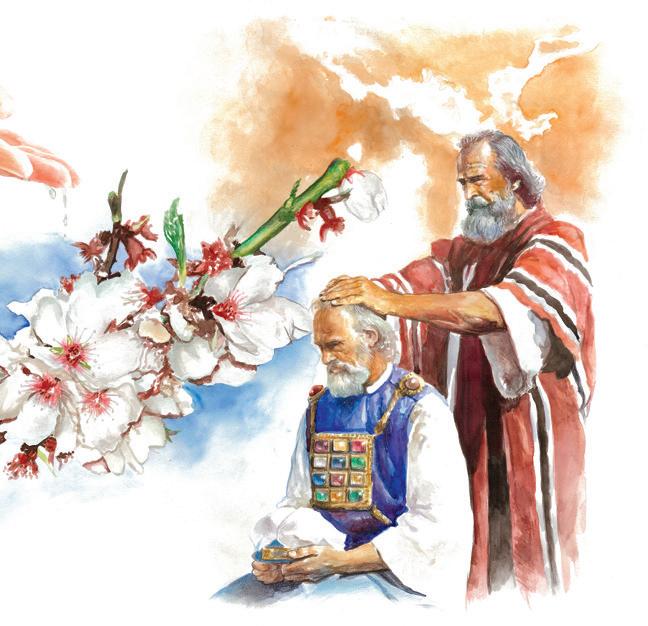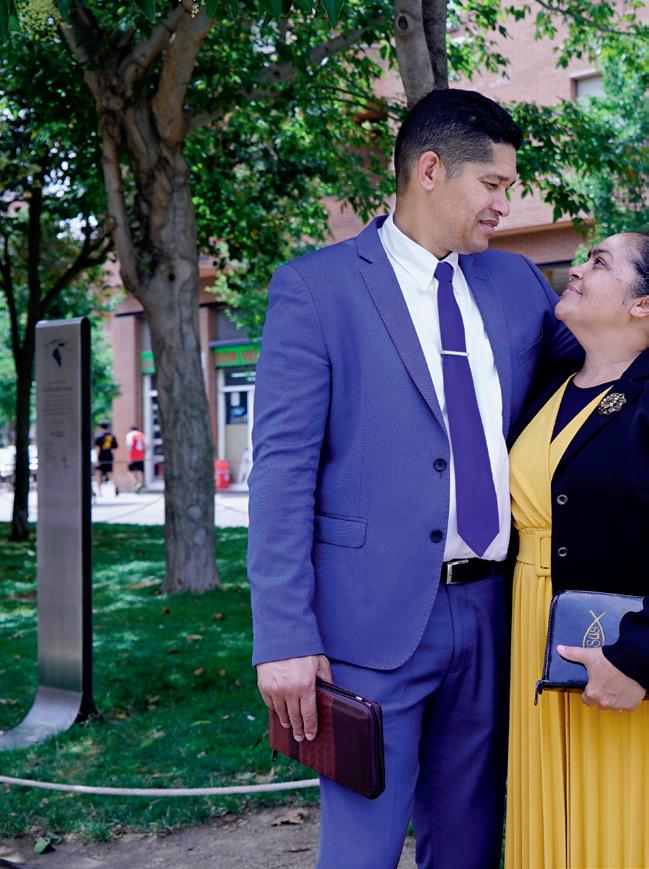
14 minute read
Cover note IS THE BIBLE RELIABLE?
from 788_English
IS THE BIBLE RELIABLE?
Some contend that the Scriptures are riddled with inaccuracies, errors and out-of-date laws and teachings that border on the ridiculous for a modern society. Nothing further from the truth. The Bible was inspired by God and written over a period of approximately 1500 years, by men from different eras, social conditions and professions: from farmers, fishermen and shepherds, to prophets, judges and kings.
Advertisement
Josh McDowell & Sean McDowell (*)


Have you ever read a passage in the Bible and thought, Now, what does that mean? Or perhaps the passage made sense but you wondered, Is that really relevant to us today? And then there are critics today that scoff at the idea of taking the Bible seriously.
“The Bible is a gift from God, one for which we can be truly grateful. This unique book reveals things that we could never find out otherwise. For example, it tells us about the creation of the starry heavens, the earth, and the first man and woman.”
“The Bible is also a heartwarming gift, for it reveals something about the Giver, God. The fact that He has provided such a book is proof that he wants us to get to know
Him well ( Jeremiah 9:24). Indeed, the Bible can help you to draw close to the Lord.”
1. Is the Bible Inspired by God? When the apostle Paul said that “all Scripture is inspired by God” (2 Timothy 3:16), he did not mean that the Bible was an inspirational book. He used a specific Greek word – theopneustos, which literally means “God-breathed” (theos, God; pneo, to breathe). All of Scripture is “God-breathed,” which means the written words in the Bible are from God. Jesus referred to Scripture this way when he told the Pharisees that they were misusing scriptural teaching. He said, “So you cancel the word of God [Scripture] for the

sake of your own tradition” (Matthew 15:6). The apostle Paul explained how the Jewish people “have been entrusted with the very words of God” (Romans 3:2). So when you read the Bible, you are not simply reading an inspirational book; you are reading words from God.
The apostle Peter made the same point when he wrote that “no prophecy in Scripture ever came from the prophet’s own understanding, or from human initiative. No, those prophets were moved by the Holy Spirit and they spoke from God” (2 Peter 1:20-21).
2. Is the Bible Without Error? Conservative Christian theologians do say that the Bible is without error (inerrant). But what they mean is, when all the facts are known, the Scriptures as they were penned by the authors in the original writings and as properly interpreted will be shown to be true and not false in all they affirm.
There were 40-some authors of the 66 books of the Bible. It was a complex process for God to communicate His message through such a diverse group of men over the span of about 1500 years. Yet he miraculously brought His Word together.
Not only did God speak through spokesmen with varied human experiences, he also expressed His Word in a number of literary styles and forms: from the mournful la-

ments of Jeremiah to the exalted poetry of Isaiah and the Psalms. God’s Word is full of historical narratives, parables, letters, allegories, metaphors, similes, satire and hyperbole. God captures the full character of those he spoke through, from the tight-knit logic of a scholar (Paul, in his epistles) to the priestly perspective of a theologian (the writer of Hebrews), the poetic talents of musicians (David, in the Psalms), and the despair and agony of a people ( Jeremiah, in Lamentations). So as we unpackage a passage we will be mindful that God’s truth is being presented through the lens of its human spokesman yet still conveys the exact, error-free message God wants us to receive.
error, none of the original autographs are in existence today. What we have today are copies of what was originally penned. And while those who made the copies (scribes) did their best to copy accurately, some errors were made.
The earlier manuscripts tend to be more accurate because they are closer to the original. But we did not know just how amazingly accurate the Old Testament copies were until the discovery of the Dead Sea Scrolls in 1947.
Before 1947, the oldest complete Hebrew manuscript in our possession dated to AD 900. But with the discovery of more than 800 manuscripts in caves on the west side of the Dead Sea, we came into possession of Old Testament manuscripts dated by paleographers to around 125 BC. These scrolls were therefore a thousand years older than any previously known manuscripts.
TRANSMISSION OF THE OLD TESTAMENT
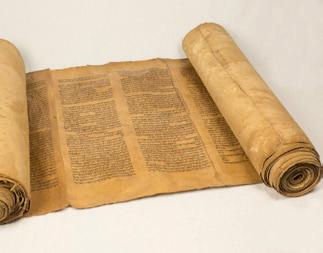
One of the ways God ensured that the Old Testament would be relayed accurately was by choosing, calling and cultivating a nation of men and women who took the Book of the Law very seriously. God commanded and instilled in the Jewish people a great reverence for the Scriptures. That attitude became such a part of their identity that a class of Jewish scholars called the Sopherim, from a Hebrew word meaning “scribes,” arose between the fifth and third centuries BC. These custodians of the Hebrew Scriptures dedicated themselves to carefully preserving the ancient manuscripts and producing new copies when necessary.
The Sopherim were eclipsed by the Talmudic scribes, who guarded, interpreted and commented on the sacred texts from about AD 100 to 500. The Talmudic scribes were followed by the better-known Masoretic scribes (about AD 500 to 900). The Talmudic scribes, for example, established detailed and stringent disciplines for copying a manuscript. Their rules were so rigorous that when a new copy was complete, they would give the reproduction equal authority to that of its parent because they were thoroughly convinced they had an exact duplicate.

But here’s the exciting part: Once the Dead Sea Scrolls were compared with later manuscript copies, the then-current Hebrew Bible proved to be identical, word for word, in more than 95 percent of the text. The other 5 per cent consisted mainly of spelling variations.
In other words, the greatest manuscript discovery of all time revealed that a thousand years of copying the Old Testament had produced only very minor variations, none of which altered the clear meaning of the text or brought the manuscript’s fundamental integrity into question.
4. Is What We Have Today Truly God’s Word? Today our complete Bible is comprised of 39 books of the Old Testament and 27 books of the New Testament. But how do we know those are the God-inspired books God prepared for us? Maybe some God-inspired books were overlooked. How do we know we have all the writings that were inspired by God?
The 66 books accepted as God’s inspired word are referred to as the canon of Scripture. Canon comes from the Greek word kanon, meaning “rule” or “principle.” In other words, there was a very high standard or measuring tool needed to deem a writing “inspired by God.”
Contrary to what some modern critics say, early Jewish and church leaders did not create the canon. Rather, those leaders merely recognized or discovered which books were “God-breathed” from their very inception. A writing was not given the authority of being Scripture just because early Jewish or Christian leaders accepted it as such. Instead, it was accepted by the leaders and the people because it was clear to them that God himself had given the writing its divine authority.
We can see at least four guiding principles or rules that qualified a letter or book to be recognized as a divinely inspired writing: • The writing was authored by a prophet or apostle of God or someone connected with them. • The message of the book was consistent with what had already been revealed about God. • The writing clearly evidenced the confirming presence of God. • The book was widely accepted by the church from an early date.
By as early as the 300s BC, and certainly no later than
150 BC, all the 39 books of the Old Testament had been written, collected and officially recognized as canonical books. The Hebrew text of these 39 books was originally divided into 24 books: five books of the Law (of Moses), eight Prophets, and eleven Writings.
By the 200s and 300s AD, church elders began to set criteria for recognizing writings of the apostles as inspired by God. In AD 367, Athanasius of Alexandria provided the first official list of the 27 books of the New Testament we have today. And by the late 300s there was consensus. All 27 books were canonized by the councils of Hippo (AD 393) and Carthage (AD 397). Remember, this was not a group of church elders authorizing a collection of religious writings – rather, they were recognizing that this collection of books was authorized by God as His Word.
5. Is the Bible Historically Accurate and Reliable? Some people think that the Bible can be trusted on moral issues but is not to be fully trusted on matters of history. However, many of the truths of the Bible are rooted in history. For example, it is crucial that Jesus was a historical person and that the bodily resurrection was a historical reality. Because as the apostle Paul puts it, “If Christ has not been raised, then your faith is useless and you are still guilty of your sins” (1 Corinthians 15:17).
The Bible is largely a historical book that reveals who God is, who humans are, how humans became separated from God, and how His redemptive plan was put in place to restore His lost children to a relationship with Him. And it is vitally important that His words have been accurately passed down from generation to generation. So the question is: Can we be confident that what was inspired by God and written down has been in fact preserved as an accurate record of history?
God has not left us to wonder. He has miraculously supervised the transmission of the Scriptures to ensure they were relayed accurately from one generation to another.
6. How Do We Interpret the Bible to Know What It Means for Us Today?
The Bible was written in a time and place vastly different from twenty-first-century North America. It is true that the Old Testament was written over a period from 3400 to 1900 years ago. The cultures were different; there is no question about that. What people did and how they expressed themselves do not much resemble the speech and activities of our modern world.
But with all these cultural differences, the Bible is still extremely relevant to us today. And to interpret and understand the relevancy of Scripture to our lives involves a two-step process. The first step it to determine what the specific passages meant for those who first spoke them or wrote them down, and what the passages meant to those who

heard them or read them. Because the Bible was written in various time periods, we must understand its historical context. How a given truth applies to us must be understood through the attitudes, settings, lifestyle and political structure of the times in which it was given.
In this first step we need to remember that nothing spoken or written in Scripture was spoken or written directly to us living in the twenty-first century. Moses and the prophets were speaking to the children of Israel. Jesus was speaking to his disciples, the crowds and various individuals. When the apostles wrote the Gospels and when Paul, Peter, James and others wrote the other books of the New Testament, they were writing them for certain hearers or readers of their time. So because God was revealing Himself and His truth to a specific audience within a specific time in history, our first task is to interpret what He intended to communicate to them at the time.
But then comes the second very important step: understanding what universal, relevant truth God is reveal-

ing to us right now. This is when we attempt to draw out God’s meaning ourselves or read into a text what we think it is teaching. When people impose their particular slant on a passage or inject their own ideas, it is not hard to see how we can end up having different and contradictory views on a particular truth. But much of this can be avoided is we follow a process to discover God’s meaning of a truth. This process is called exegesis.
Exegesis is from the Greek word exegeomai, which means to make known, to unfold in teaching, to declare by making known. The word is used by John when he says that Jesus “has revealed God to us” ( John 1:18).
Thus, to exegete a passage means we must understand the meaning of words and put those words within context – a literary, historical and theological context. And if we read a passage out of its context, we are in danger of reading another meaning into the text that simply is not there. Scholars call this eisegesis, or “reading into.” Most errors of interpretation come from reading into Scripture a meaning that is
TRANSMISSION OF THE NEW TESTAMENT
While there were expert Hebrew scribes who made copies of the Old Testament manuscripts, that is not the case with the New Testament. There are several reasons for this: 1) The official Jewish leadership did not endorse Christianity; 2) the letters and histories circulated by the New Testament writers were not at the time thought as an official Scripture; and 3) the documents were not written in the Hebrew language, but rather in forms of Greek and Aramaic. Thus, the same formal disciplines were not followed in the transmission of these writings from one generation to another. In the case of the New Testament, God did a new thing to ensure that His Word would be accurately preserved for us and our children.
Historians evaluate the textual reliability of ancient literature according to two standards: 1) the time interval between the original and the earliest copy, and 2) how many manuscript copies are available.
For example, virtually everything we know today about Julius Caesar’s exploits in the Gallic Wars (58 to 51 BC) is derived from ten manuscript copies of Caesar’s work The Gallic Wars. The earliest of these copies dates to a little less than a thousand years from the time the original was written. Our modern text of Livy’s History of Rome relies on one partial manuscript and nineteen much later copies that are dated from 400 to 1000 years after the original writing.
By comparison, the text of Homer’s Iliad is much more reliable. It has an estimated 1757 manuscript copies in existence today, with a mere 400-year time gap between the date of composition and the earliest of these copies.
Using this accepted standard for evaluating the textual reliability of ancient writings, the New Testament stands alone. It has no equal. No other book of the ancient world can even approach its textual reliability.
Nearly 25,000 manuscripts or fragments of manuscripts of the New Testament repose in the libraries and universities of the world in languages such as Coptic, Latin and Armenian. Among these are nearly 5800 Greek manuscripts of the New Testament, which is over three times as many as for the Iliad. The earliest of these discovered so far is a fragment of John’s Gospel, located in the John Rylands Library of the University of Manchester, England; it has been dated to within 50 years of when the apostle John penned the original. As this book goes to publication there is compelling evidence that a recently found portion of Mark’s Gospel dates from the first century.
We can be confident that the text of the New Testament and Old Testament has been handed down over the centuries with precision and accuracy.
just not there. To understand what God is saying to us today we must understand it within its context and then properly apply His truth to our own culture and personal lives.
(*) Joslin “Josh” McDowell is an American Christian writer. Some of his best-known books are The Resurrection Factor, Evidence that Demands a Verdict, Right from Wrong, and The Deceivers. Sean is his son and follows in his father's footsteps.

